- The Prologue is Honda's new EV.
- Though it's based on a Chevy, there's a lot of good news here for Honda fans.
- Check out how it drives below.
2024 Honda Prologue First Drive: A Sheep in Sheep's Clothing
The Prologue is exactly what you'd expect, and little else
The 2024 Honda Prologue is the brand's first crack at what is quickly becoming the most popular formula for new EVs: a five-seat, two-row SUV. Only it's not really a Honda, at least not once you get beneath the skin. The Prologue is based on the Chevrolet Blazer EV but features different bodywork, a reworked dashboard, and suspension and software tuning that is unique to Honda. Not only that, the Prologue lays the groundwork for the brand's electric future in the U.S. To that end, the Prologue has to take on competitors such as the Hyundai Ioniq 5, Kia EV6, Tesla Model Y, Toyota bZ4X and Volkswagen ID.4.
Among this group, the Prologue's styling is pleasing. It's boxy, but all of the edges and creases have an attractive, soft radius to them. It's approachable and looks more like a lifted wagon than a genuine SUV. That's no bad thing, however, and what Honda calls a "neo-rugged" design is a lot less likely to split opinion than the Camaro-inspired Blazer EV on which it's based. (The Blazer EV pretty much cuts our staff down the middle when it comes to aesthetics.) The Prologue Elite trim level also features 21-inch wheels, the largest ever fitted to a Honda.
Enough EV range?
Honda says the dual-motor Prologue Elite trim, which is what we drove, will get an EPA-estimated 273 miles of range. We haven't been able to do a proper real-world Edmunds EV Range Test, but we'll be sure to do that once we get a production model in for testing. Lesser trims with only one front-mounted motor and smaller wheels will get an estimated 296 miles of range on a full charge. Honda is also offering Prologue buyers a $500 incentive to install a Level 2 charger at their homes. On a public DC fast charger, Honda says the Prologue can charge a rate of up to 150 kW. That's decently speedy and comparable to other electric SUVs such as the Ford Mustang Mach-E but not up to the rapid-charging capability of the Ioniq 5 and EV6.
The all-wheel-drive Elite is powered by two electric motors (combined, they produce 288 horsepower and 333 lb-ft of torque) and an 85-kWh battery pack. Honda hasn't provided horsepower and torque figures for the front-wheel-drive single-motor versions of the Prologue just yet, but we expect it to feature both less power and torque.
How does the Prologue drive?
Considering the dual-motor Prologue is less powerful than most of its rivals, it's fair to assume that it won't offer the same brisk acceleration. And indeed it doesn't. It seems like Honda tuned the powertrain to be a lot like the smoothest possible version of the V6 found in the brand's Passport and Pilot SUVs, just without all the associated engine clatter. There's not much noise at all unless you select Sport mode, at which point simulated electric motor noise is pumped through the speakers. We had hoped Sport would unlock some new level of performance, but acceleration is always sedate, regardless of your chosen drive mode.
The Prologue is tuned for everyday comfort then ... except it only gets halfway there. EVs are constantly fighting the massive weight of their battery packs. The best expertly balance a compliant ride without feeling overly floaty. The Prologue's ride is just on the wrong side of firm. It won't rattle the fillings out of your molars, but over anything but a perfectly smooth road, the Prologue transmits every little lump and bump from the road surface into your backside. We wanted more squish from the suspension and tires — this is an SUV with zero sporting pretenses that rides as hard as some dedicated performance cars.
Inside the Prologue
The Prologue does manage to succeed inside. It's far quieter than the CR-V, Pilot or any other Honda SUV offering. There's no undue wind noise and, of course, no sound of an engine whirring under the hood. The interior can be had in a luscious tan color that gives the space a cozy-cabin-in-the-woods vibe we dig. The whole cabin has an airy, light feel, and practical matters like storage space and ease of use are well handled. There's ample room in the door pockets for large water bottles, there's a large cubby in the center console area that's big enough for a backpack or purses, and the rear hatch area offers 25.2 cubic feet of cargo space (about the same as a Hyundai Ioniq 5) with the rear seats folded up.
Though it's functional, the Prologue's interior has significant similarities to the Blazer EV on which it's based. The dashboard layout, the information displayed on the instrument cluster, the climate controls, the indicator and wiper stalks, and even the your-door-is-open chime are identical to the Blazer's. The biggest differences are the way the infotainment screen juts out from the dashboard as opposed to being linked by one long piece of plastic (as it is in the Blazer) and the color palette of the display screens.
This might seem like it's a big knock on the Prologue but, in reality, it isn't. The trick here is that only those who jump back and forth between products from these two very different brands with regular frequency will take that as a con. When we asked about this, a Honda representative told us less than 5% of its customers cross-shop with Chevrolet. The only brand Honda has in its sights is Toyota, and the bZ4X (along with its Subaru-badged twin, the Solterra) is the weakest product in this segment by far. The Toyota sits at the very bottom of our rankings for electric SUVs, and at first blush, the Honda wins out pretty much everywhere. In essence, Honda isn't concerned this is a rebadged Chevy — it's actually betting on the fact that you, its customers, probably won't sit in a Blazer before you go looking for a Prologue.
Taking tech from the Blazer wasn't a bad move
That said, the reskinned interface is easy to use and read and features a more attractive color palette than the Blazer's system. The interfaces for both the Blazer and Prologue are very closely related when it comes to their functionality, but Honda did just enough to make it feel distinctive. This is a step forward for Honda, which typically puts small screens in their cars (even the massive Pilot), so two large, crispy 11-inch LED displays help move the automaker forward when it comes to tech. Yes, the screens are Chevy parts, but they're both bigger and better than Honda's are.
We've criticized the Blazer EV for its buggy software that we've unfortunately dealt with on our long-term Blazer EV test vehicle. The Prologue's infotainment display did get hot at one point during our drive and failed to register some of our commands for around half an hour. But once the screen cooled back down, it was business as usual. Cross your fingers that the Prologue will be less trouble-prone than the Blazer at its debut.
Everything in the Prologue works, the buttons for all of the controls have a nice feel to them, and you even get Apple CarPlay and Android Auto smartphone integration, something you can't get in a Blazer EV. You also get a raft of standard safety and driver aids. Honda's lane keeping assistance system and its adaptive cruise control are both well calibrated. These are driver aids as they should be, helpful when you need them and out of your way when you don't. Blind-spot warning, rear cross-traffic braking and rear pedestrian alert are all standard as well.
It's only the start
The Prologue, which presents simply as a two-row EV crossover with the requisite 300-ish miles of range, the option for all-wheel drive, and a spacious interior, is nothing new. The fact that it's handsome enough, everything works more convincingly than in the Blazer we've had trouble with, and it feels of a quality that justifies the Prologue's $48,795 starting price (and nearly the $60,000 asking price of the top-spec Elite models) is all icing on the electric cake.
But bear in mind the Prologue is quite literally a prologue. It's just the start of an entirely new chapter for Honda, and if Honda's concepts from this year's CES are any indication, it's not going to be settling for "nothing new" for very long.
Edmunds says
The Prologue won't move the game forward in any measurable way or make Model Y owners second-guess their purchase, but it will satisfy those who want an EV with a Honda badge.
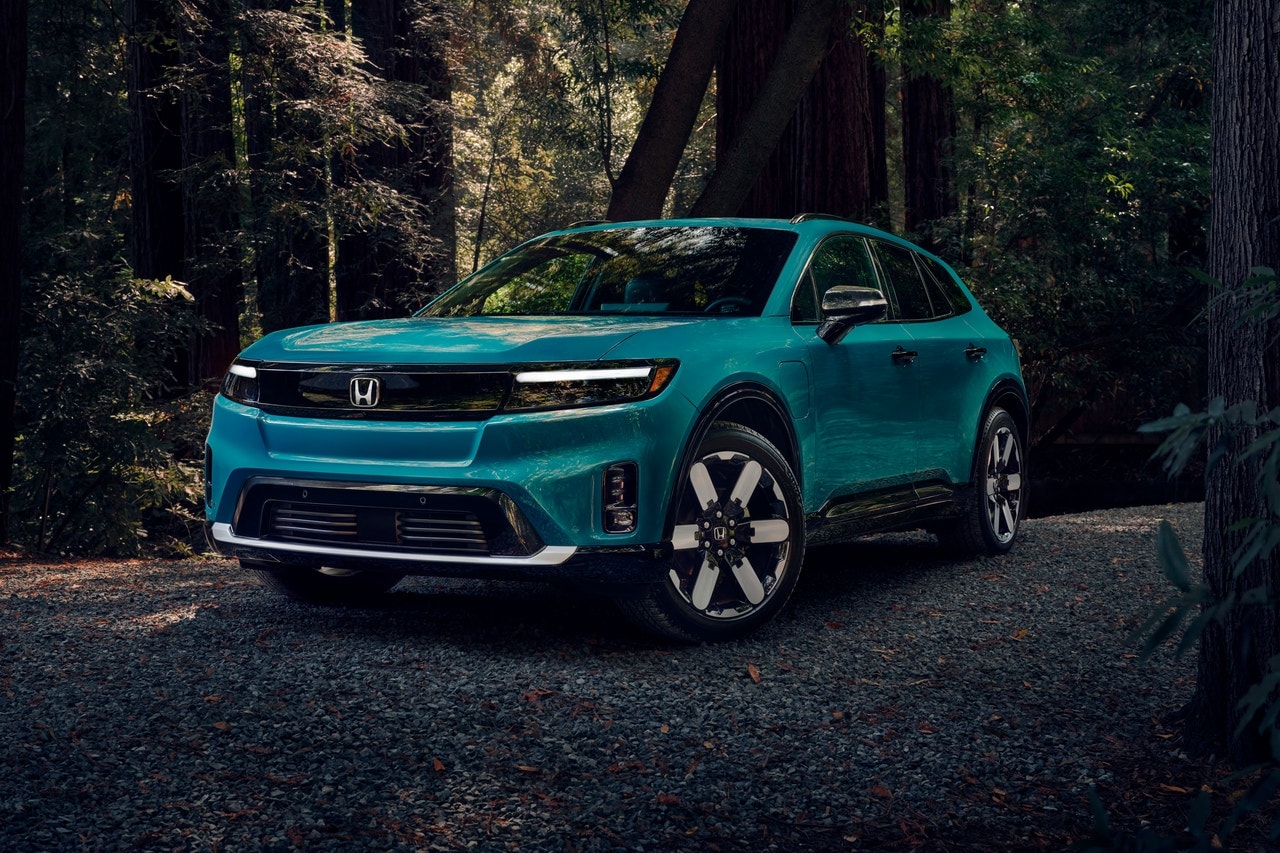




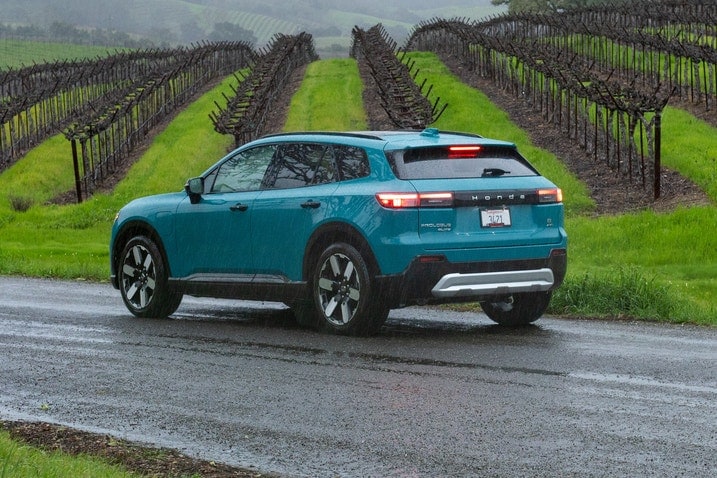
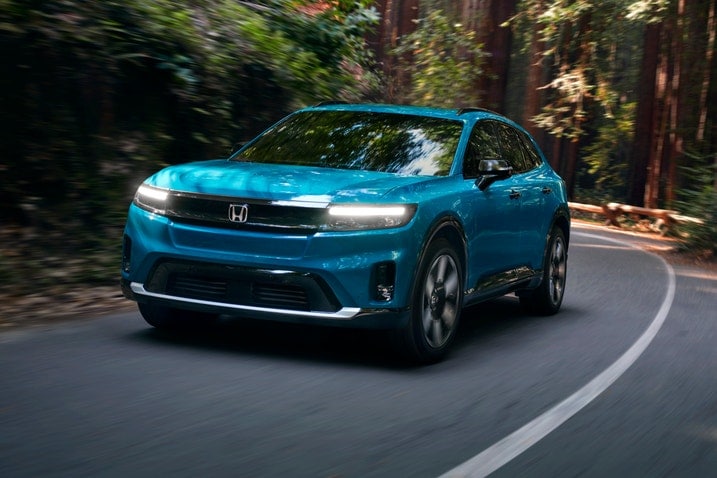
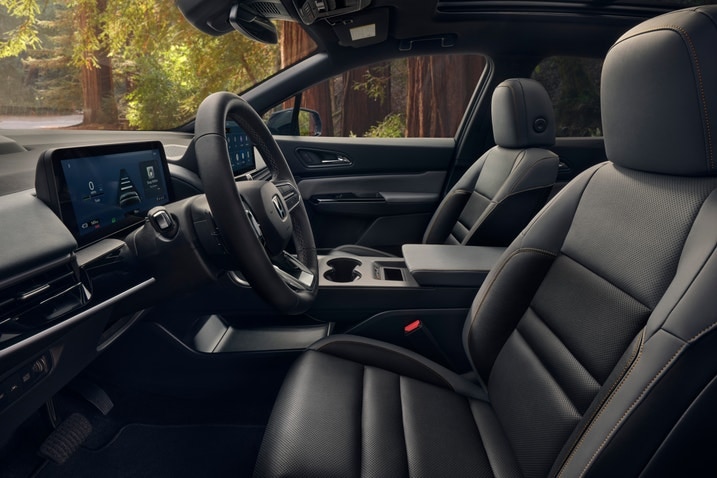
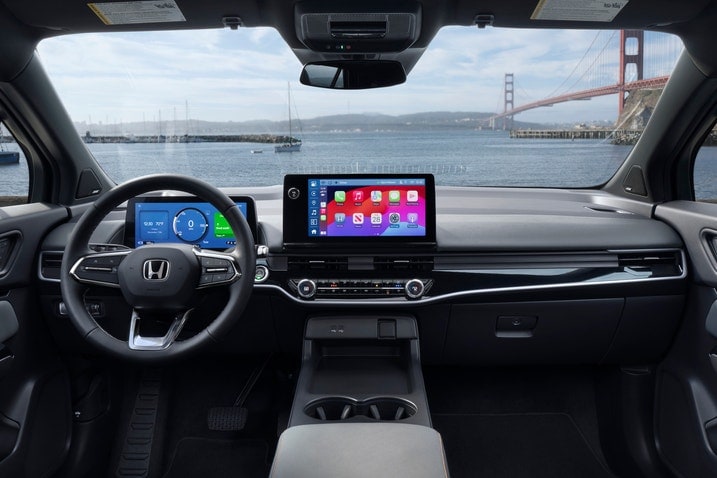
 by
by